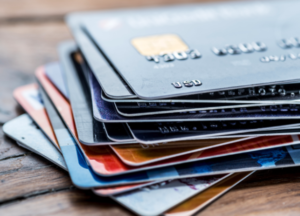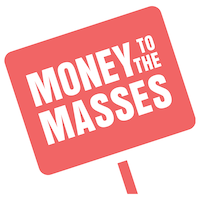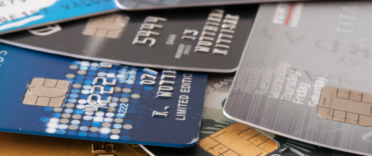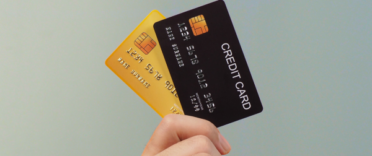 A credit card can be a great tool to borrow money, earn rewards, consolidate debt and build a credit history. However, as with any financial product – especially ones that involve taking on debt – there is an application process to navigate. By taking certain steps you can mitigate the chances of taking on unnecessary debt and damaging your credit score. In this article, we take you through the best way to apply for a credit card. Follow this guide to learn how to make the right decision for your financial situation and boost your chances of being accepted for the credit card you want.
A credit card can be a great tool to borrow money, earn rewards, consolidate debt and build a credit history. However, as with any financial product – especially ones that involve taking on debt – there is an application process to navigate. By taking certain steps you can mitigate the chances of taking on unnecessary debt and damaging your credit score. In this article, we take you through the best way to apply for a credit card. Follow this guide to learn how to make the right decision for your financial situation and boost your chances of being accepted for the credit card you want.
How to apply for a credit card in seven steps
If you are unsure how a credit card works, start off by reading our article ‘What is a credit card’. It is important to understand what having a credit card involves before you start to think about applying for one.
Here are the steps to follow to make applying for a credit card as simple and easy as possible.
1. Pick the type of credit card you want to apply for
There are lots of different types of credit cards. The best type for you will depend on your financial situation, what you want to use your card for and your borrowing history.
Choosing a particular type of credit card is a great way to start your application process because it will refine the options available to you. Instead of wading through hundreds of different credit cards, you can focus on the products that will fit your borrowing plans. For example, you may want a credit card to earn rewards, pay off other debt, fund a one-off purchase, rebuild your credit score or to use while you are abroad. You may need a credit card with a high credit limit or one that doesn’t charge any extra fees.
All of these options are available, so make sure to work out what you need before you start applying. Read our article ‘How to choose the best credit card for you’ to learn more.
2. Check your credit score
Whether or not you can get the credit card you want will depend in part on your credit history. If you have never borrowed before, you are unlikely to have much of a credit history and your credit score is likely to be low as a result. This doesn’t guarantee that your application will be rejected, but it does mean lenders may be more reluctant to let you borrow. It also means you’re less likely to be accepted for the most competitive credit cards.
On the other hand, if you’ve built up a credit history and your credit score is high, you’re much more likely to get accepted and qualify for credit cards that offer competitive perks such as cashback or low interest rates.
If you have never checked your credit score, it’s a good idea to do so before you apply for a credit card. You can do this free of charge via services such as Experian, Clearscore and Credit Karma. This can help you to understand how likely you are to be accepted for a credit card.
Don’t only check your credit score when you are about to apply for a credit card. It is well worth checking your credit score at least once a year to correct any errors on your report. Simple steps such as paying bills on time and registering on the electoral roll can also help your credit score.
If your credit score is particularly low, you may want to pause your credit card plans at this stage and take some time to rebuild your credit score. For more information, read our article 'How to improve your credit score quickly‘ and watch our video ‘What is a credit score and how do you check it?’.
3. Find out if you can afford a credit card
Your next step should be to work out if you can afford the type of credit card you want. At this stage there are three main figures to look out for.
Representative APR
The representative APR (annual percentage rate) is the figure used by providers to display the cost of the card in the first year. It takes into account both the initial rate of interest you will pay and additional charges, though this will not include late repayment fees.
The representative APR you see advertised will not necessarily be the one you get as the advertised figure is what the lender expects to offer to 51% of successful applicants. The remaining 49% may be offered a higher rate.
Calculating representative APR on credit cards also involves certain assumptions that may not mirror how you plan to use your card. For example, it assumes that you will make one purchase of £1,200 when you first get the card, then pay off the balance in equal instalments over a year. Clearly, this is not how most people use a credit card. You can read more in our article ‘What is representative APR?’.
The representative APR figure can be a good guide to which cards are expensive, but remember that you will not need to pay interest if you clear the balance in full every month.
Charges and fees
When comparing credit cards it’s also important to check the small print for any charges or fees. If you are carrying out a money transfer, you’ll usually pay a transfer fee. There are also fees for missed payments, exceeding your credit limit, or withdrawing cash on your credit card. Some credit cards also charge monthly or annual fees, particularly if they offer competitive benefits. Always ensure you know what these are to avoid any nasty surprises.
Minimum payments
Another important figure to think about is the minimum monthly repayment. Your credit card bill will state the minimum amount that must be repaid each month, typically around 1-3% of the balance. Only paying this amount each month means it will take you far longer to clear your debt and you’ll pay a lot in interest. If you can, it’s best to pay off more than the minimum each month or ideally, the full balance. You can set up a monthly direct debit to help you remember to pay on time.
It is a good idea to think about your spending and what your minimum repayment may be. You should aim to repay the balance in full every month, but you should be certain that you can cover the minimum amount. Missing repayments can have a serious effect on your ability to borrow in the future and potentially land you in significant debt. Our article 'What is the minimum payment on a credit card?' goes into more detail.
If you are in danger of missing repayments on any kind of debt, look for free debt advice as soon as possible. We have more information in our article ‘Where to get free debt advice’.
4. See if you are eligible for your credit card
To be eligible for a credit card in the UK you need to be at least 18 years old and you must have a UK address. You can check if you are likely to be successful with your application without actually applying for a credit card. This is because many credit card providers now offer eligibility checkers that run a ‘soft’ search on your credit file and estimate how likely you are to be accepted for a particular product. Soft searches do not leave a mark on your credit report as a ‘hard’ search would.
A history of frequent hard searches on your credit report can suggest you are struggling to manage your finances and are desperate for credit. This will likely make a lender less happy to approve your application. With an eligibility checker that uses a soft search, you don’t need to worry about it affecting your chances of being accepted for credit in the future.
Using an eligibility checker can help ensure you only apply for credit cards you are likely to be accepted for. If you find that you are unlikely to be approved for the cards you want, it may be worth looking at your credit score and seeing what you can change to make yourself a more attractive borrower. This can prevent you from making too many applications in a short space of time.
5. Compare costs
Once you have found a few deals you are likely to be accepted for, it is time to look at the costs in more detail. Remember that the costs you see advertised when you compare deals are not always what you will pay if your application is successful.
Make sure there are no extra fees or charges to pay that you have not yet considered. You can also look into whether your interest rate will increase after an initial introductory offer ends.
You can ask a lender to quote you a personal APR. This is a figure that shows what you will be charged for borrowing money on your credit card, including any standard fees. Not all lenders will do this, as you may need to fill out a full application first in order to provide your personal details.
6. Make sure you have all of the essential details
Now you have narrowed down your credit card options to one, make sure you have all the details you will need for your application to hand. When you apply for a credit card, you will usually need to provide the following:
- Your name and address (and address history if you have recently moved)
- Your date of birth (you will usually need to be aged 18 or over)
- Your nationality
- Your employment status
- Your salary or income
Your identification will be checked via your credit record and the electoral roll, but you may also be asked to send in copies of documents such as your driving licence, passport or a bank statement.
7. Apply for your credit card
Once you have all your information ready, you can apply for your credit card. Applying online is likely to be the best option for most people, but it is not the only way. You can apply for a credit card over the phone, in branch or by post.
Filling out the necessary form online should only take a few minutes. After you have submitted your credit card application, the lender will perform a hard credit check through its associated credit referencing agency.
A decision on whether you have been accepted or rejected will usually be made very quickly, if not instantly. In some cases you may have to wait 5-10 days or provide extra information in order for the lender to confirm a particular issue.
If accepted, your credit card should arrive within 10 working days. You’ll then need to activate it – usually by phoning an automated number – and once your PIN has arrived, you can go ahead and use your new card.
Which credit card is best for you?
We have teamed up with Creditec* to help you compare credit card deals and check your eligibility in minutes. You will be able to find out which credit cards you are most likely to be accepted for through a soft credit check, which will not affect your credit score. You can then tailor your personalised list to sort cards by the features that matter most to you. This could mean filtering for the type of credit card you want, sorting the list by the rate of interest or highlighting the cards you are most likely to be successful in applying for. You can click here to compare deals*.
Can I apply for a credit card with bad credit?
There are credit cards designed for applicants with a poor credit history or even no credit history at all. Credit building credit cards are aimed at those with poor credit scores and are designed to help you improve your credit score over time. You will usually be given a low credit limit to start with, but if you use your card sensibly, this can increase after several months.
The biggest drawback to credit building credit cards is that they charge high rates of interest. To avoid this, it’s best to pay off your balance in full each month if you can. Note that a few credit building cards offer interest-free periods for up to three months, but it’s vital not to let this encourage you to spend more than you can afford to pay back. To read more about credit building cards, take a look at our article ‘Compare the best credit cards if you have bad credit‘.
If a link has an * beside it this means that it is an affiliated link. If you go via the link Money to the Masses may receive a small fee which helps keep Money to the Masses free to use. But as you can clearly see this has in no way influenced this independent and balanced review of the product.






